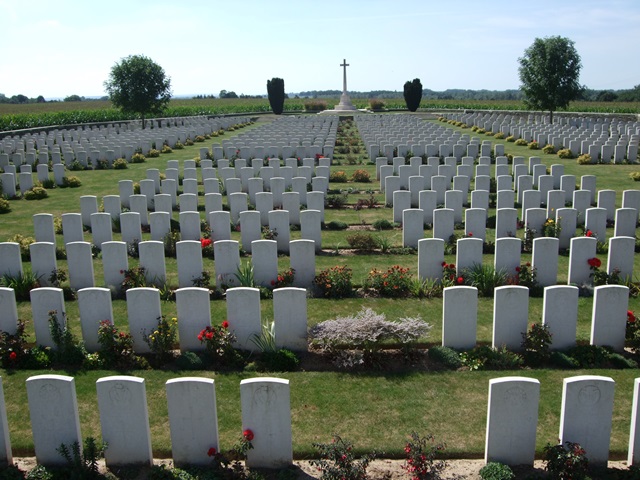William Herbert Halfyard
Date of birth: 1888
Date of death: 28.4.1918
Area: Outwood
Regiment: Royal Field Artillery
Family information: Son of William and Sarah Ann Halyard (nee Green)
Rank: Gunner
Service number: 90079
War Service
In 1914, William Herbert Halfyard joined the Royal Horse Artillery and went to France, on 22nd May 1915. He was later drafted to “A” Battery, 82nd Brigade (LXXXII) which was designated to the artillery section of the 18th Division. The 18th Division had landed in France on the 24th July 1915 and served on the western front throughout the war.
An Artillery Brigade usually consisted of three battery’s, with each Battery being served by drivers, gunners, bombardiers, farriers, saddlers, wheelers and trumpeters. Whilst all NCO’s and men wore a bandolier, only 36 men in each battery carried a rifle and bayonets were not issued.
The artillery was always deployed some distance behind the front line trenches, in an attempt to hide their presence from the enemy. However, the flash from their own guns would often give their position away. As a consequence, the artillery positions would often be pounded by enemy shellfire, thus causing casualties and forcing frequent changes in position.
In 1916, the 18th Division was involved in all three phases of the Battle of the Somme, which began on 1st July and drew to a close five months later, on 21st November. During 1917, the Division was involved on the Ancre and at Arras, during the third Battle of the Scarpe. They were also involved at Pilkem Ridge, Langemarck and Passchendaele, during the third Battle of Ypres.
On the 21st March 1918, the German Army launched Operation Michael, an offensive on a forty three mile front between the River Scarpe, in the north and River Oise, in the south. The enemy greatly out-numbered the Allied armies, who were forced to withdraw. A week later, due to supply problems and the need for their troops to rest, the enemy advance stalled, near the strategic city of Amiens. The 18th Division was involved in the initial action near St Quentin and suffered heavy losses. The Battery’s of 82nd Brigade were soon overwhelmed by the enemy and ceased to be a fighting force. However the survivors formed a composite battery and withdrew towards Amiens.
Gunner William Herbert Halfyard died on 28th April 1918. He was initially buried between the villages of Cugny and Annois (Map Reference 66D.R14.d3.2) some 16 km. south-west of St Quentin. However, the circumstances of his death are not known, as the area of his burial was under German occupation at this time. During the offensive many allied prisoners were taken and the German Army set up a Field Hospital in the area, to attend to injured prisoners of war. It is therefore possible, that William Herbert Halfyard died in captivity.
However, after the war his grave was brought into the Grand Seraucourt British Cemetery, which is about 8 km south-west of St Quentin. There are now over 2000 First World War casualties buried, or commemorated, in the cemetery, of which two-thirds are unidentified.
Family Life
William Herbert Halfyard was the son of William Halfyard and his wife, Sarah Ann, formerly Green. His birth was registered at Wakefield, in the December Quarter of 1888. William Herbert Halfyard was usually referred to as Herbert, to avoid confusion with an elder sibling named Willie. His father, William Halfyard, was a miner, but in 1890 died at the age of 31 years.
At the time of the 1891 census, William Herbert, his widowed mother, Sarah Ann and his siblings, were living with his grandmother, Elizabeth Green, at Bailey’s Buildings, Pinderfields, Wakefield. In 1895, his mother married George Cutts, a miner, who at that time was also living at Bailey’s Buildings. The family lived at Thurnscoe, near Barnsley for a time, before moving to Leeds Road, Outwood. At the time of the 1911 census, his mother and extended family were living at Princess Avenue, Outwood. However, William Herbert Halfyard was living at the home of his step-father’s brother, Mark Cutts, at Heath near Chesterfield. At this time William Herbert was employed as a coal miner hewer.
 Grand Seraucourt British Cemetery
Grand Seraucourt British Cemetery

